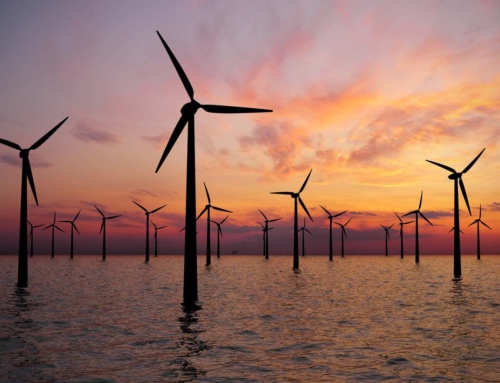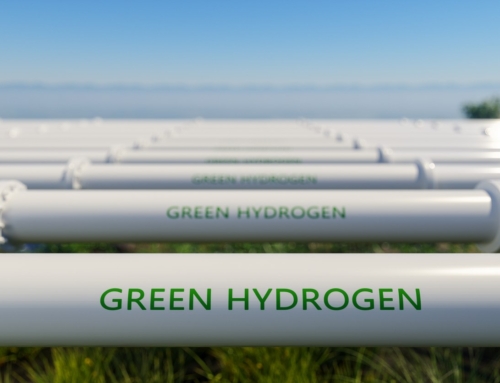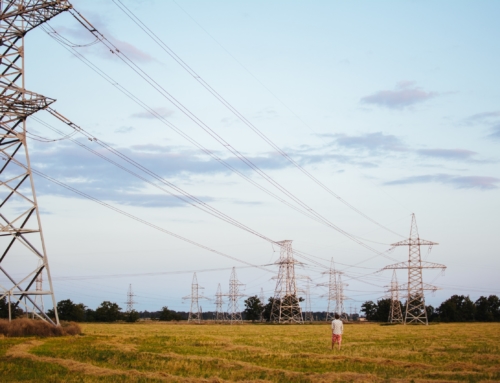Food Waste: The Problem
Americans waste a lot of food. Roughly 133 billion pounds a year to be precise, which is about one-third of all the food produced in the U.S. According to the U.S. Department of Agriculture, if we piled up all the food that’s not eaten throughout a single year in the United States, we would be able to fill a skyscraper in Chicago almost 44 times.
Along with the fact that food waste is basically money down the drain, it’s also a huge misuse of precious resources and creates a significant environmental issue. Food that is disposed of often ends up accumulating in landfills, where it begins to rot and release large amounts of methane. Methane is a strong greenhouse gas that contributes to global warming. In fact, United Nations climate experts estimate that up to 10% of all human-made greenhouse gas emissions are linked to food waste.
According to a ReFED report, food is wasted through the entire supply chain: first by the producers (i.e. farms and food manufacturers); then by consumer-facing businesses like retail grocery stores and restaurants; and lastly by consumers in their homes. Food wastage by consumer-facing businesses and homes accounts for the largest portion of discarded food (80 percent), while food wastage in the home accounts for the highest economic cost ($144 billion).
Combatting the Food Waste Issue
While finding ways to prevent food waste is without a doubt an important part of the solution to tackling the food waste issue, you might be wondering what other possibilities there are. Scientists all over the world have been looking at ways for us to be able to turn food waste into a valuable resource: electricity. Since a third of all the food produced is simply disposed of, it’s an unused resource for generating energy. If just a portion of this waste is sent to waste-to-energy (WTE) systems, it would not only free up large areas in landfills, but it could also be used to fuel our vehicles and warm our homes. Imagine the amount of carbon that would curtail!
Today, there are over 800 industrial-scale WTE plants in more than three-dozen countries around the world. Most employ anaerobic digesters, which make use of microorganisms to break down and convert organic waste into fuels such as biogas, biodiesel, or ethanol. With about 70 percent of food waste around the world still going into landfills, there is significant potential for this industry.
Types of Food Waste That Can Be Used to Create Energy
Unlike other renewable energy sources, biomass can be converted directly into liquid fuels, called “biofuels,” to help meet fuel and energy needs. The two most common types of biofuels in use today are ethanol and biodiesel. Ethanol is a renewable fuel that can be made from various plant materials (and is composed of primarily plant starches and sugar) whereas Biodiesel is a liquid fuel produced from renewable sources, such as new and used vegetable oils and animal fats. Below are some common food waste items that can be turned into these biofuels:
- Used cooking oil (i.e. vegetable oil ,castor oil, olive oil, fat from animals, sunflower oil)
- Meat/poultry renderings, scraps, and fats
- Bones (from fish, meat, and poultry)
- Fish and other seafood wastes and scraps
- Fish oil
- Nut oil
- Hemp
- Algae
- Damaged/spoiled fruits, fruit peels, and fruit grinds
- Excess/spoiled vegetables, vegetable scraps, and vegetable stalks
- Starch products (from wheat, corn, sugar cane, molasses, potatoes, and other fruits)
- Agricultural residues (from livestock feed and other byproducts)
The Future of Bioenergy from Food Waste
Today, a good example of how food waste is being successfully used to turn energy can be seen in Massachusetts, where dairy farmers are using it to create electricity. Because Massachusetts law prohibits the disposal of commercial organic waste (including food) by businesses and institutions that generate at least one ton of this waste per week, many have begun to participate in the waste-to-energy initiative. Farmers gather wasted food from around the state (including from many Whole Foods locations), feed waste into anaerobic digesters, which capture the methane emissions and make renewable energy.
As we discussed, food waste is a big problem, not only in the U.S., but also worldwide, to both the economy and our environment. The organic waste from households and many businesses including breweries, restaurants, coffee shops, dairy farms, slaughterhouses, etc. presents an enormous potential for turning food waste into energy.
How You and Spring Power & Gas Can Help
It’s very important that we each play our part in addressing this global issue and find ways to avoid food waste in our daily lives. Buying only what you need, storing food correctly, and saving/composting leftovers and scraps are just a few of the things you can do. Discovering new solutions to this global issue is critical to the longevity of our planet. Be sure to learn about how you can join Spring Power & Gas in our mission of creating a sustainable future.






